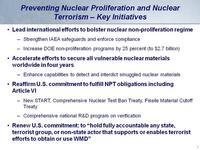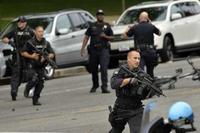-
U.K. launches cyberwarfare reserve force
U.K. defense secretary Philip Hammond announced that the Ministry of Defense (MoD) has begun this month to recruit the country’s top IT specialiststo join the Joint Cyber Reserve Unit (JCRU). “In response to the growing cyber threat, we are developing a full-spectrum military cyber capability, including a strike capability, to enhance the U.K.’s range of military capabilities,” Hammond said.
-
-
Director of U.K. intelligence spiritedly defends surveillance programs
The chief of MI5, Britain’s domestic intelligence agency, said last week that recent leaks of government surveillance capabilities had given “the advantage to the terrorists.” Andrew Parker said that “What we know about the terrorists, and the detail of the capabilities we use against them, together represent our margin of advantage. That margin gives us the prospect of being able to detect their plots and stop them. But that margin is under attack.”
-
-
DOD policy drives militarization of local police departments
The adoption of military gear by local police departments across America – some call it the “militarization” of American police – has been going on for a while. Now, observers ask whether this trend might have repercussion which should make citizens uneasy. Police department receive the equipment for free – all they have to do is pay for the shipping. The gear being sent to local police includes planes, helicopters, armored vehicles, grenade launchers, assault rifles, bullet-proof helmets, night-vision goggles, and more. A few sheriff departments ordered tanks.
-
-
Calif. Gov. Brown vetoes restrictive assault weapon measures
Governor Jerry Brown of California, saying that “The state of California already has some of the strictest gun laws in the country,” on Friday vetoed two measures which would have restricted the sale and possession of some semi-automatic assault weapons, and two other measures which would have tightened firearms reporting requirements and denied guns to DUI offenders. The governor’s vetoes derailed the most sweeping gun legislation measures to be considered so far this year by the California legislature. Brown signed several smaller pieces of gun legislation into law on Friday.
-
-
German neo-Nazis targeted Chancellor Gerhard Schröder for assassination

Beate Zschäpe, the last surviving members of the National Socialist Underground, a violent German neo-Nazi group, is on trial this month for taking part in the murders of eight Turkish immigrants, one Greek man, and a German policewoman, in addition to participating in fifteen bank robberies and two bomb attacks. In testimony Monday, a police investigator said that computer files found in an apartment used by NSU member indicate that in 2002, the group was working on a plot to assassinate the then-chancellor Gerhard Schröder.
-
-
Virginia police built massive data base of political rallies participants
From 2010 until last spring, the Virginia State Police (VSP) used automatic license plate readers (ALPRs) to collect information about – and build a massive data base of — political activities of law-abiding people. The VSP, for example, recorded the license plates of vehicles attending President Obama’s 2009 inauguration, as well as campaign rallies for Obama and vice presidential candidate Sarah Palin. Following a strong opinion by Virginia Attorney General Ken Cuccinelli, the VSP discontinued the practice, and the agency says it has purged its license plate database, and now disposes of ALPR-obtained information within twenty-four hours of collection, unless it is relevant to a clearly defined criminal investigation.
-
-
U.S. keeping too much data on too many people for too long: report
A new study surveys five methods of data collection by U.S. intelligence and law enforcement agencies, and finds that these agencies not only collect massive amounts of innocent Americans’ data, but can share and store this data for up to seventy-five years or more, creating opportunities for abuse and clogging government databases.
-
-
NSA tried to crack Tor anonymity tool
In its efforts to gather more intelligence, and overcome obstacles to this effort, the National Security Agency (NSA) has repeatedly tried to develop attacks against people using Tor, a software tool designed to protect online anonymity – and which is primarily funded and promoted by the U.S. government itself to help political activists, whistleblowers, militaries, and law enforcement. The NSA’s determined effort to crack Tor raises questions about whether the agency, deliberately or inadvertently, acted against Internet users in the United States when attacking Tor. One of the main functions of Tor is to hide the country of all of its users, meaning any attack could be hitting members of Tor’s large U.S. user base.
-
-
USAF partners with national labs to improve aircraft component design
Working with national laboratories, universities, and industry, the Air Force is ensuring it stays on the cutting edge of global security by creating a new engineering paradigm to improve the safety and fuel-efficiency of aircraft.Materials research engineers at the Air Force Research Laboratory (AFRL) have partnered with national laboratories to model defects and study materials at their grain level in an effort to develop and advance the design of systems used by the military personnel, including aircraft.
-
-
Greater role for Pentagon in next phase of U.S. war on terror

The Obama administration had dramatically increased the use of drones in the war against terrorists. The number of drone strike has declined this year relative to the high levels of 2010-11. The number of drone strikes may increase again, but this past weekend’s Special Forces raids in Somalia and Libya are an indication that the next phase in the U.S. war on terrorism would see, in relative terms, less of a reliance on CIA-operated drones and a greater role for the Pentagon.
-
-
Aerospace and Defense Industry says its member companies negatively affected by shutdown
The Aerospace Industries Association called on Congress and President Obama to pass a bipartisan solution that reopens the government as soon as possible. The association’s president said that the negative impacts of the shutdown range from industry worker furloughs on programs that support the soldiers to delays in new aircraft certification and space systems launches.
-
-
U.S. nation-wide quake early-warning system
The United States is likely to be struck by a major earthquake within the next twenty years. Scientists say that instead of waiting to experience a devastating earthquake and then invest in preventative measures for subsequent earthquakes, the country should be proactive and take action before the event. Investing in a nationwide earthquake warning system will save lives, prevent destruction of key infrastructure, and reduce the size of the economic loss that may result from an earthquake.
-
-
Preventing nuclear terrorism

Nuclear terrorism remains a real and urgent threat. Despite an array of mechanisms established to combat this threat, several serious problems persist, requiring relentless attention and actions by the United States, Russia, and other responsible nations. These problems include continuing nuclear security vulnerabilities in a number of countries and the continued incidents of illicit trafficking in nuclear materials, radioactive sources, and the various components.
-
-
Predicting violence among psychopaths no more accurate than tossing a coin
Risk assessment tools used to predict prisoner re-offending are no more accurate than tossing a coin when it comes to psychopaths, according to new research. The researchers say the findings — which also show the tools perform at best moderately in those with depression, drug and alcohol dependence, and schizophrenia — have major implications for risk assessment in criminal populations.
-
-
Shots exchanged near Capitol Hill, suspect – a woman -- hit

Shots were exchanged around 2:15 p.m. this afternoon outside the Hart Senate Building on Capitol Hill between police officers and a lone gunmen. Congressional buildings on both the Senate and the House side were placed under lock-down for about an hour. The lock-down was lifted at 3:00p.m. Police said the fire was exchanged between police officers and a woman in a black car, who had earlier was driving suspiciously near the White House. She sped away from the White House when police approached her, and sped toward Capitol Hill.
-
More headlines
The long view
Factories First: Winning the Drone War Before It Starts
Wars are won by factories before they are won on the battlefield,Martin C. Feldmann writes, noting that the United States lacks the manufacturing depth for the coming drone age. Rectifying this situation “will take far more than procurement tweaks,” Feldmann writes. “It demands a national-level, wartime-scale industrial mobilization.”
How Male Grievance Fuels Radicalization and Extremist Violence
Social extremism is evolving in reach and form. While traditional racial supremacy ideologies remain, contemporary movements are now often fueled by something more personal and emotionally resonant: male grievance.
The Surprising Reasons Floods and Other Disasters Are Deadlier at Night
It’s not just that it’s dark and people are asleep. Urban sprawl, confirmation bias, and other factors can play a role.
Why Flash Flood Warnings Will Continue to Go Unheeded
Experts say local education and community support are key to conveying risk.
